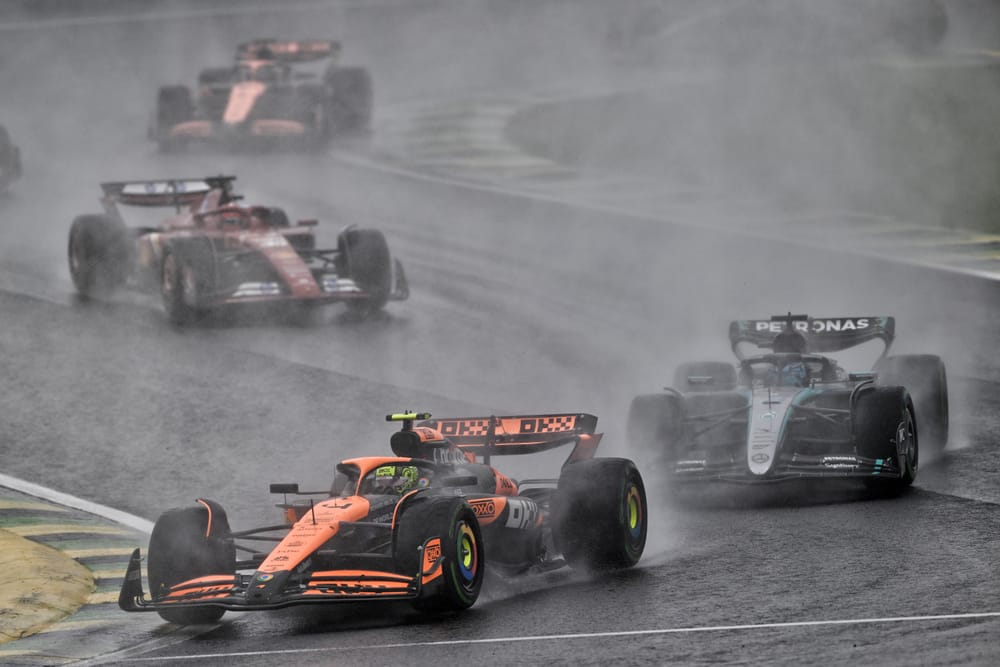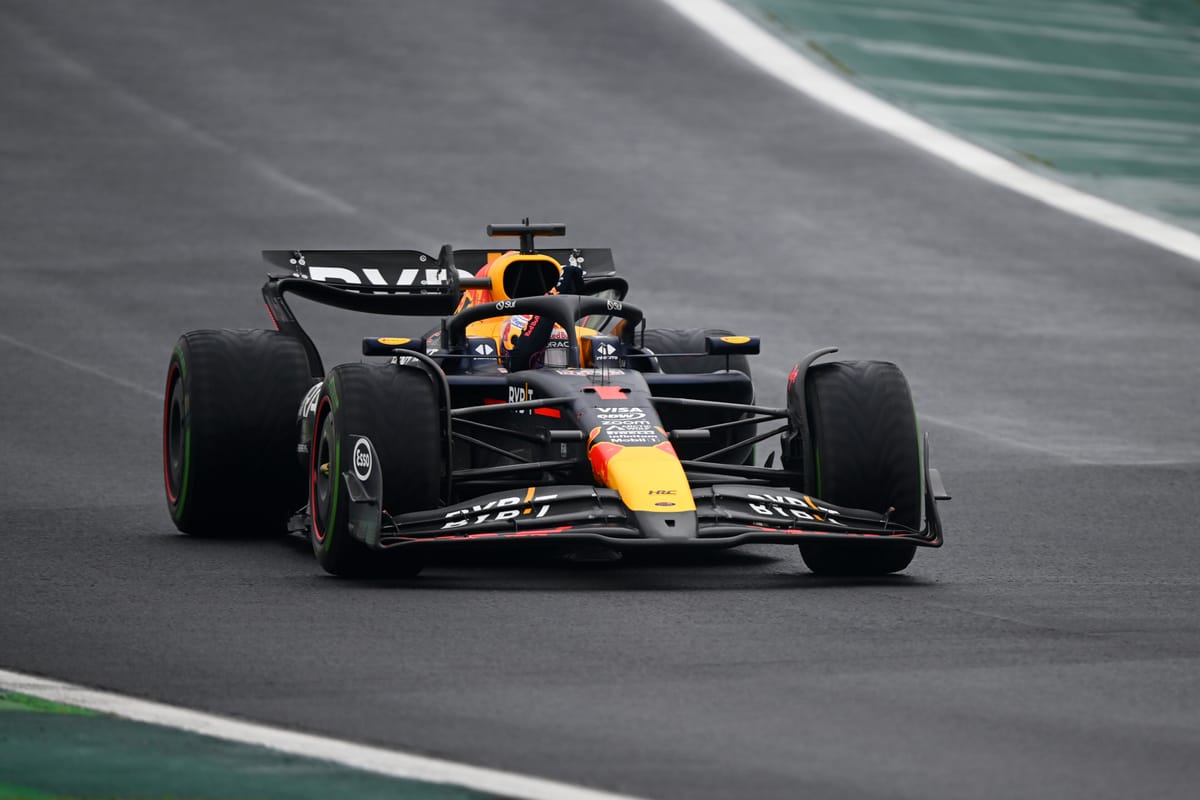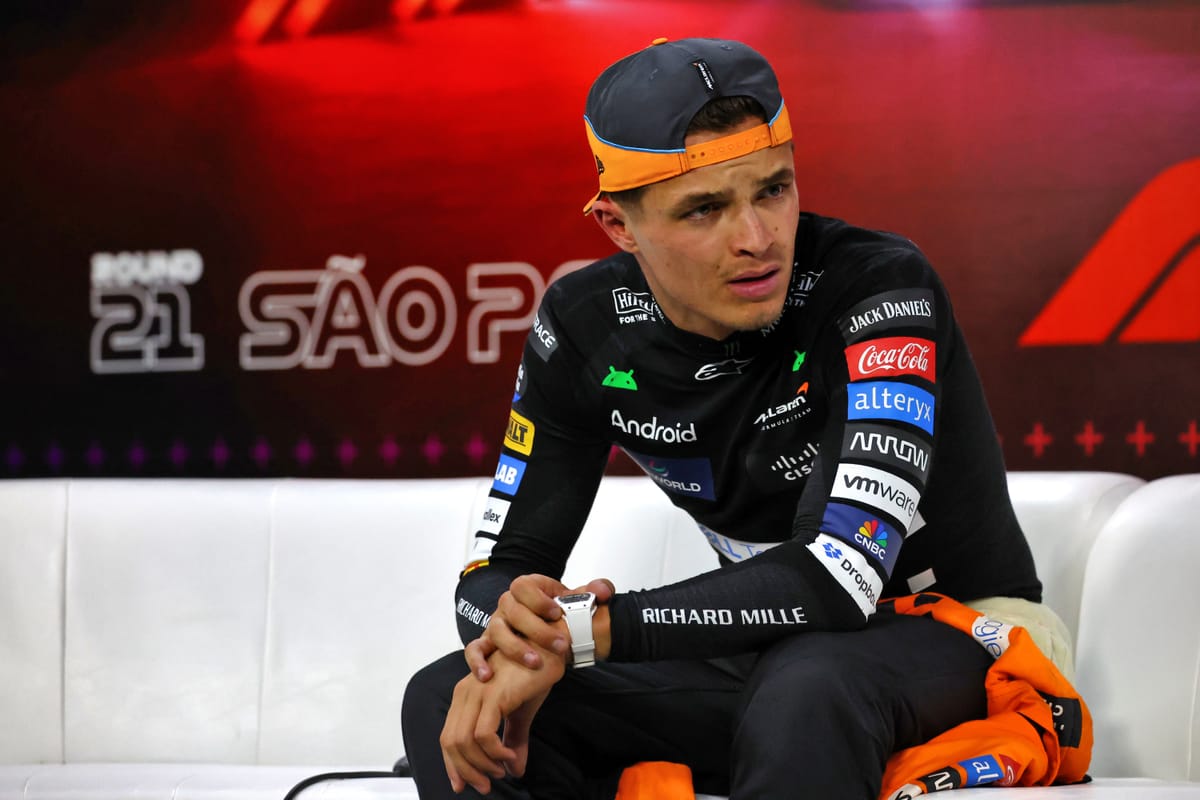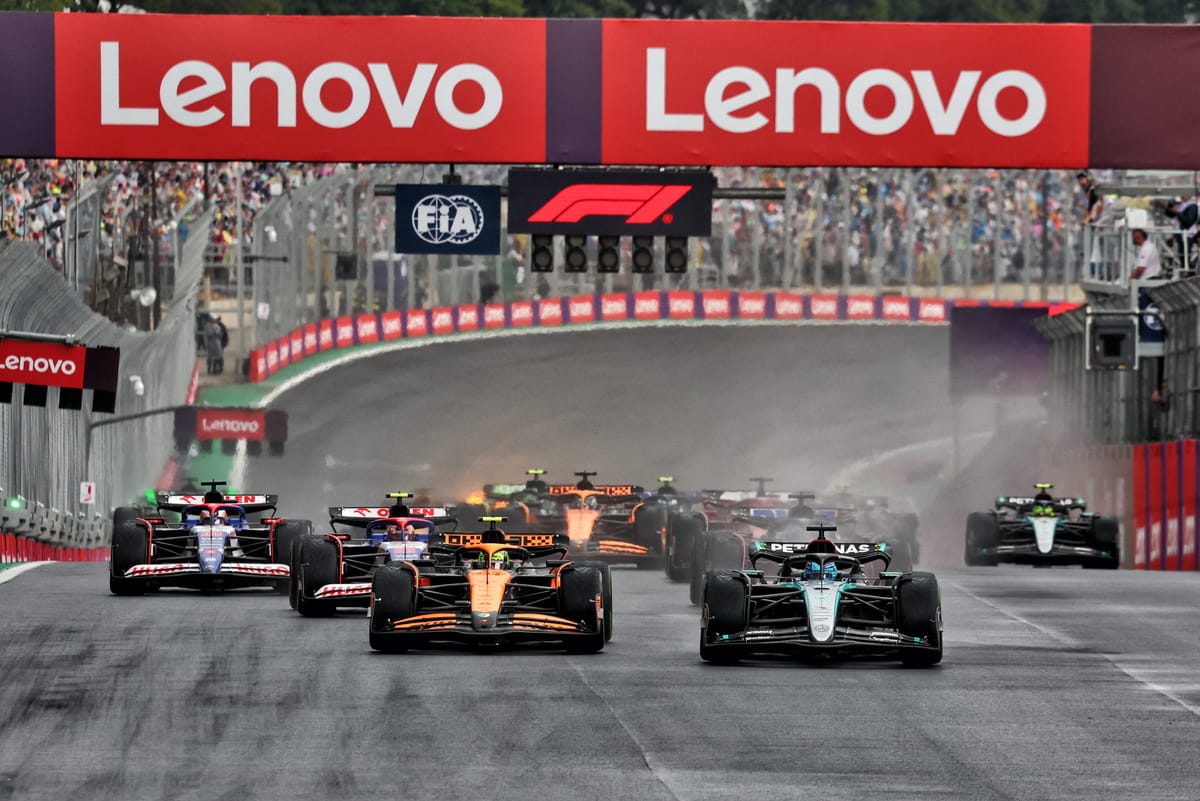Up Next

This one will go into even Max Verstappen's list of greatest Formula 1 victories; a demonstration of sustained brilliance in the wet of Interlagos from 17th on the grid.
He was untouchable, in a different league to anyone else and this surely takes away any lingering hope Lando Norris may have had of the title.
Three races to go and 62 points down, he's just taken a killer blow. But partly by his own hand. He made two key errors. You can't do that with Verstappen around. Not even when he's starting near the back.
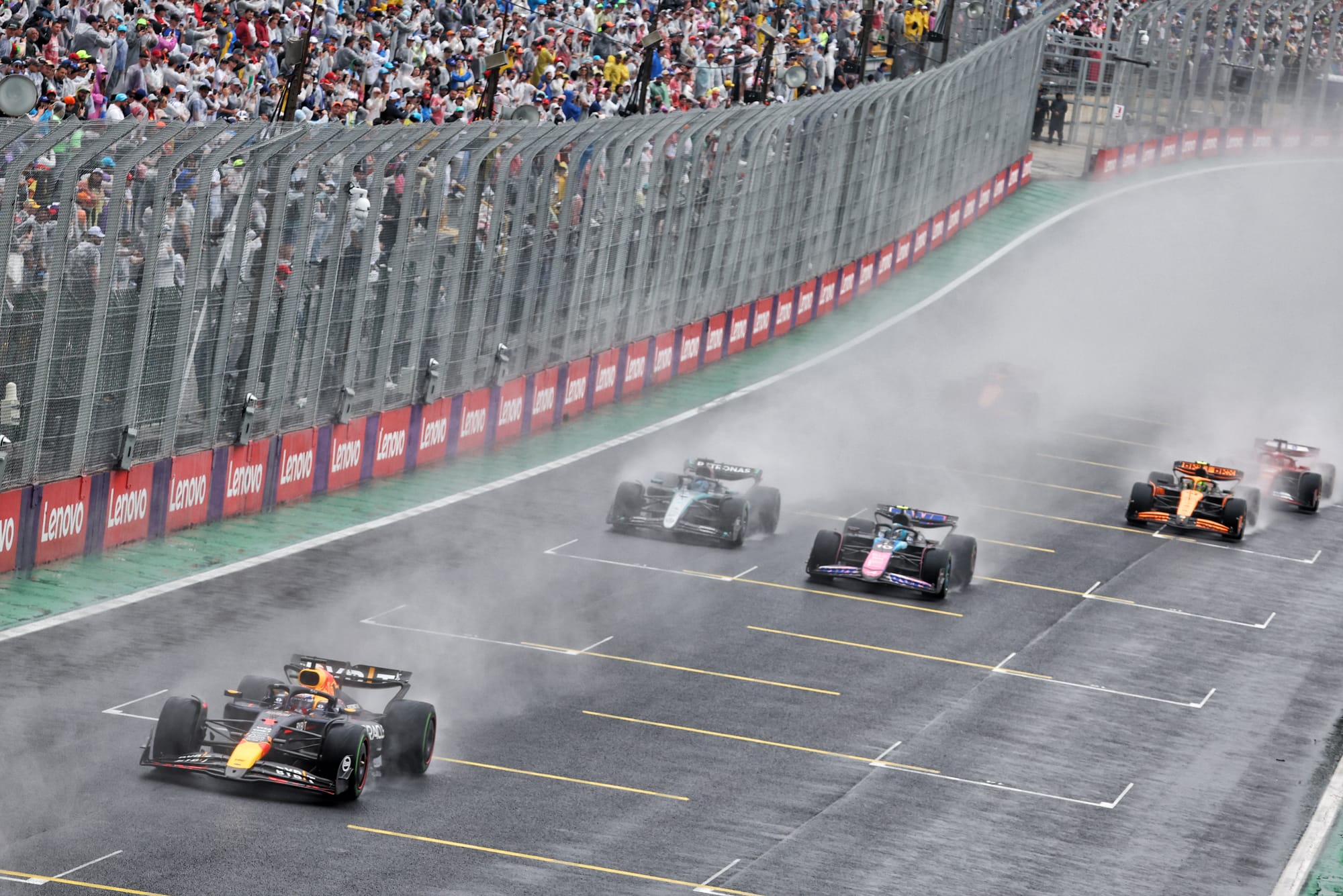
The McLaren was the fastest car around Interlagos in the dry. But the rain which cancelled Saturday qualifying and which fell in reduced intensity through Sunday led McLaren to abandon its new medium downforce wing - which had helped it to a team orders-assisted 1-2 in the sprint after locking out the front row.
In those conditions the Red Bull was about on a par with the Ferrari - and Verstappen spent most of that race pressuring Charles Leclerc for third, finally making it past, only to then be penalised back to fourth for a VSC restart infringement.
Point was, although he'd been close enough to the McLarens to apply a bit of pressure, it was no more than that. The McLarens had pace in hand, as had been evident in sprint qualifying.
But a bigger wing was deemed necessary for the predicted wet conditions of the grand prix proper.
Norris remained fast on this - but his advantage was definitely reduced. His pole was almost matched by the Mercedes of an overachieving George Russell, despite the latter's bumpy ride.
The Red Bull was probably quicker than either in those conditions (though that advantage was definitely amplified by Verstappen himself) but things hadn't worked out in qualifying.
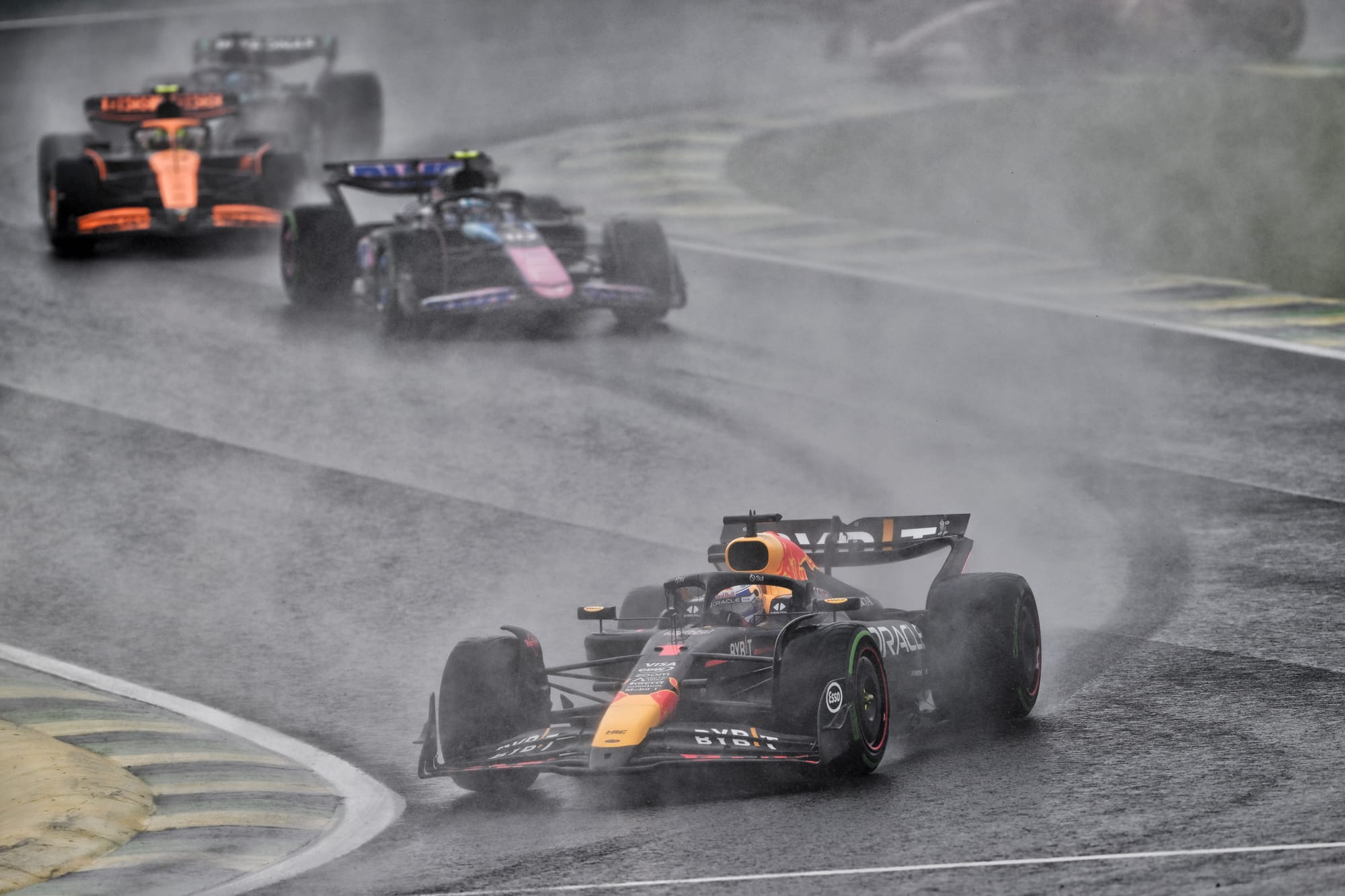
The crazy conditions of grand prix qualifying and the timing of a red flag (for a crashing Lance Stroll) caught Red Bull out, leaving Verstappen only 12th fastest. Which became 17th after his power unit penalty.
Well, the 17th grid slot but 16th car on the grid - as the Williams of Alex Albon (crashed after qualifying seventh) was not there.
In Q1, Verstappen had gone fastest and Norris had scraped through by the skin of his teeth - but that was all a little random given the crazy conditions. Those qualifying fortunes were ultimately transposed, leaving Norris sitting on pole with a quick car and his rival many rows behind.
But with Norris's big wing, he was going to be slow on the straights. Of the top four cars the McLaren was the slowest at the end of the straights, the Mercedes the fastest. Norris desperately needed to retain track position off the grid, especially with DRS being unavailable because of the conditions. He did not.
After making a bit of a nervy mess of the aborted start (caused by Stroll crashing again, this time on the formation lap), Norris lost out at the start proper to Russell.
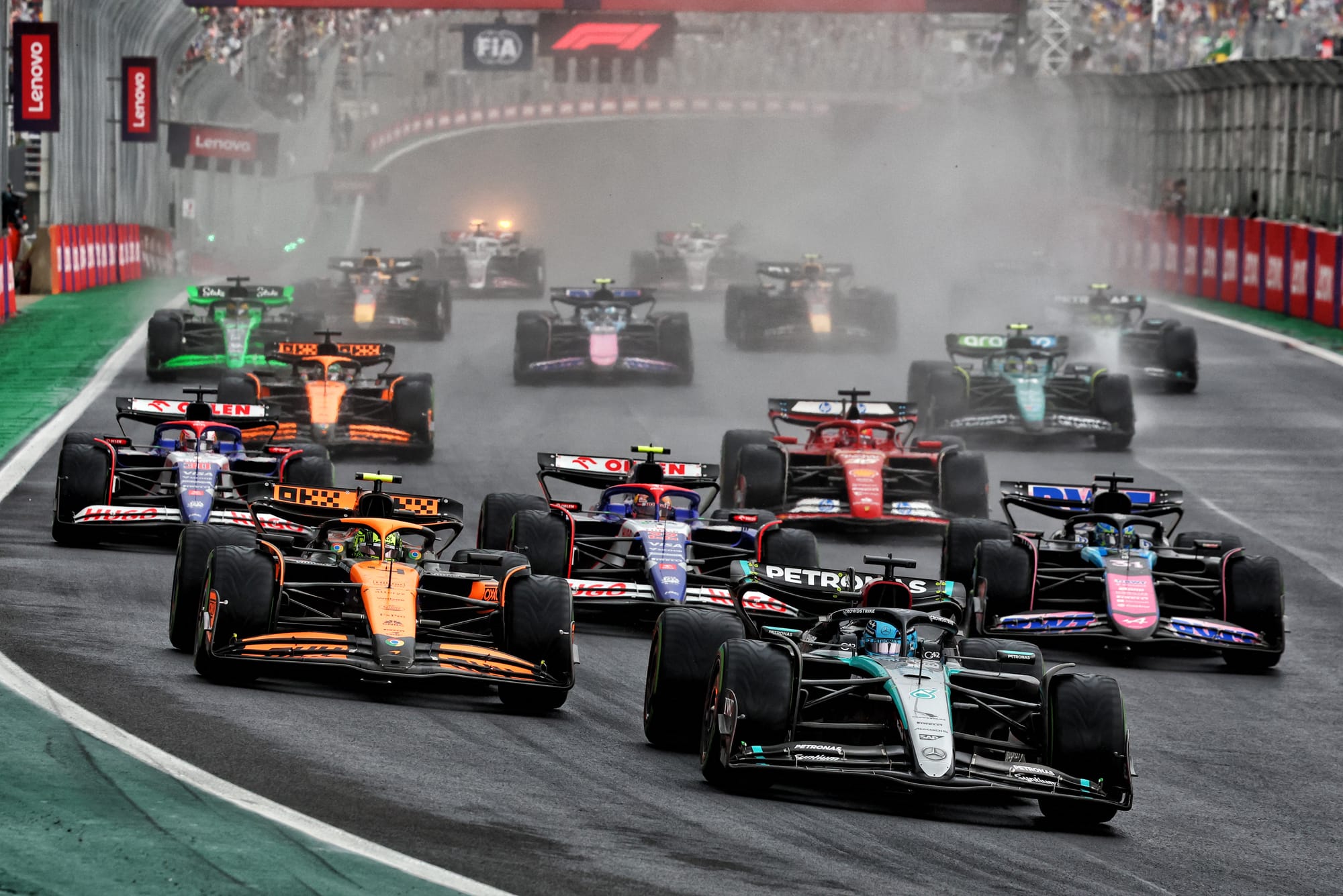
For the next 30-odd laps Norris was stuck behind a car which was probably a couple of tenths slower. For a time this seemed like it was going to be very damaging, as Verstappen was catching fast.
Max had instinctively put himself in all the right places on the first lap and drivers of the slower cars he was initially among were not about to make life too difficult for him as he came through.
LAP 2/70
— Formula 1 (@F1) November 3, 2024
Make that seven places 💪
Verstappen is past Hamilton and up to P10 😮#F1 #BrazilGP pic.twitter.com/xXCqqmDpXa
From an effective 15th, with Stroll and Albon now removed, he was 10th going into lap 2/69 as he went down Lewis Hamilton's inside. From there he just steadily picked them off until arriving on the tail of Leclerc again. But the Ferrari was itself at the tail of a three-car train: YukiTsunoda-Esteban Ocon-Leclerc in third, fourth and fifth.
Constrained to Tsunoda's pace, this appeared to have neutralised Verstappen's threat to Norris who by the 20th lap was almost 14 seconds ahead of the Red Bull despite still trying to find a way by Russell.
The piece of luck which slotted everything into place for Verstappen's masterclass came around lap 28. As the rain began to get heavier and the intermediates became more worn, it was all building up to an incident of some sort. On the 28th lap Nico Hulkenberg spun, triggering a VSC.
VSC!
— The Race (@wearetherace) November 3, 2024
A very beached Haas there. pic.twitter.com/YtM9m1kbZh
Even before that had happened, Norris had been urging his team to bring him in for an undercut on Russell.
McLaren countered that there wasn't yet a good gap to drop him into, that he'd be caught in traffic. Just as Leclerc had been a few laps earlier when Ferrari had tried it on Ocon.
"It's getting really wet and the tyres aren't good," warned Norris.
So w the VSC came, Norris was brought in at the first opportunity. So too was Russell - much against his wishes. He was sure a red flag was imminent, so bad were conditions becoming, and he wanted to be out there still leading when that happened. He was overruled.
Mercedes' reasoning for this was that if there was a safety car rather than a red flag they'd be potentially trapped on old tyres - set to fall towards the back if they stopped with the field compressed. That was the risk. The safe thing to do was come in under the VSC.
Russell not sounding *too* happy there 🤬 pic.twitter.com/YY636CZaiq
— The Race (@wearetherace) November 3, 2024
Two things led that to not work. By the time Russell and Norris got to the pitlane, the VSC was being lifted - meaning there would be no time saving over a conventional stop. Secondly, although a safety car was then put out as the field had reduced to an aquaplaning crawl, so heavy was the rain, it was almost immediately replaced by a red flag as Franco Colapinto crashed his Williams.
Meanwhile Ocon and Verstappen had stayed out - as had Ocon's Alpine team-mate Pierre Gasly, who'd been running 8s behind Verstappen before the VSC.
Under the safety car that gap disappeared and they ran 1-2-3 but they desperately needed a red flag out there on their old tyres, potentially sitting ducks on the restart but set to lose a load of places if they stopped with the field compressed. They got their red flag and their time-free tyre changes. Without that, even Verstappen's genius would likely not have conjured a victory.
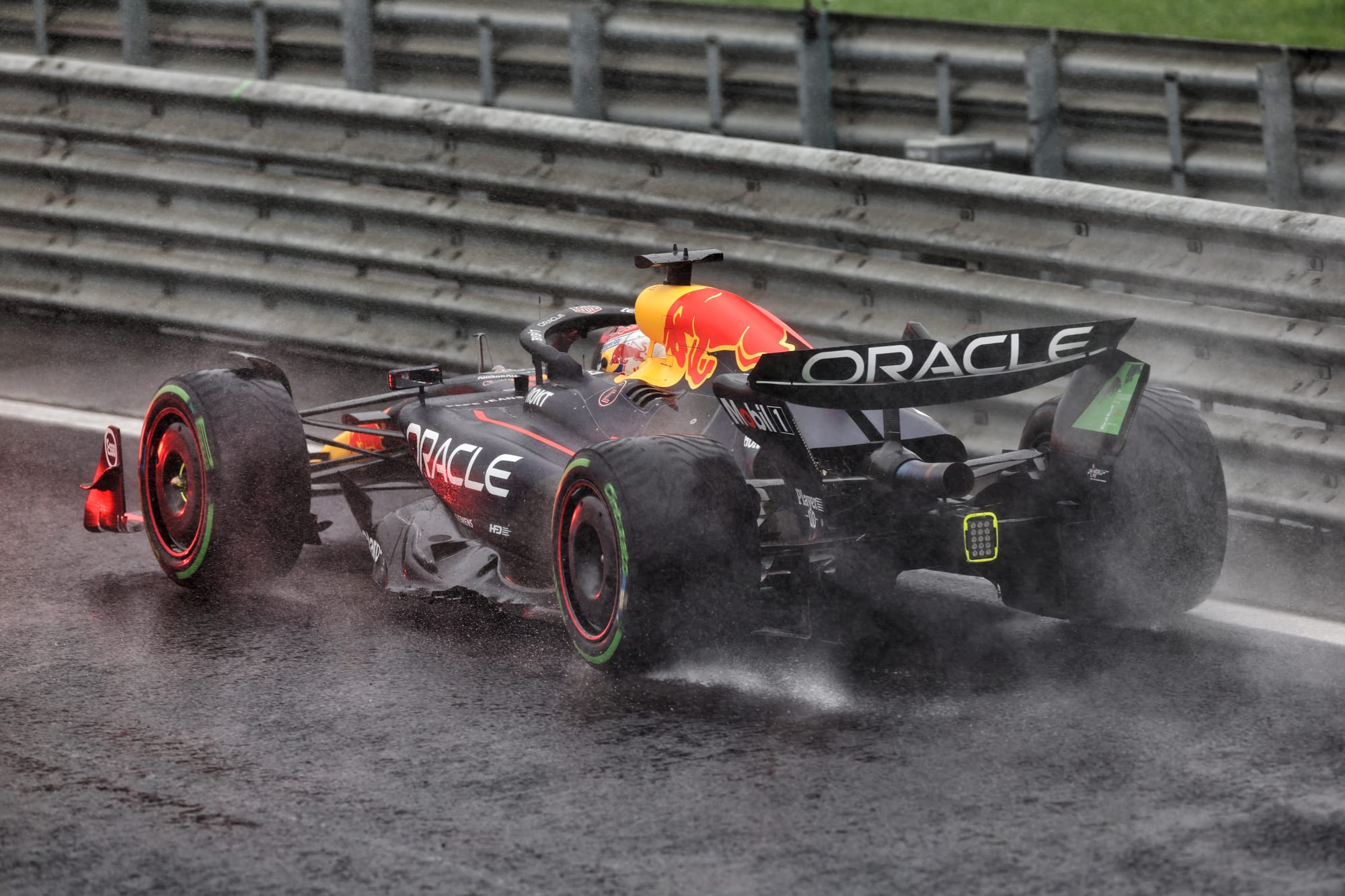
Was there a right call to be made? Yes, but only in hindsight. Staying out got Verstappen from four places and 14s behind Norris, and apparently stuck there, to two places in front of him (Norris having finally passed Russell in the spray on their outlaps).
Then the wait. To see what the weather would do as the Colapinto mess was cleared up. A rolling start, 22 minutes after the red flag. The rain had passed. Bright skies but wet track, 37 laps to go. One lap behind the safety car for a rolling restart - and Ocon timed it perfectly.
Behind, Leclerc dived down Russell's inside under braking for the Senna Esses, Russell moved right to avoid contact, just as Norris was locking his rear brakes and sliding towards the run-off.
He rejoined behind Oscar Piastri, having dropped three places. Piastri gave him one of them back, under team instructions. But Norris would never find a way by either the Ferrari or Mercedes again. With that lack of straightline speed, he could not afford such scrappy mistakes because there was no recovering from them.
With his tyre and brake temperatures perfectly prepared, Ocon pulled out over 1s on Verstappen on the first flying lap, then 1.3s on the subsequent one. Ocon was flying, but it was only a matter of time before Verstappen got everything up to temperature.
SAFETY CAR!
— The Race (@wearetherace) November 3, 2024
Sainz has hit the barriers... and now he's got going again!
...and then stopped again. What is going on. pic.twitter.com/GZ4SCv0Vkr
Before that happened, there was another safety car; Carlos Sainz had dropped the Ferrari going into Turn 8 after braking on the super-slippery white lines.
On the next restart, Verstappen was much better prepared and scythed down Ocon’s inside into Turn 1, Esteban later marvelling at just how late Verstappen could brake there.
That in fact was a key component to his performance.
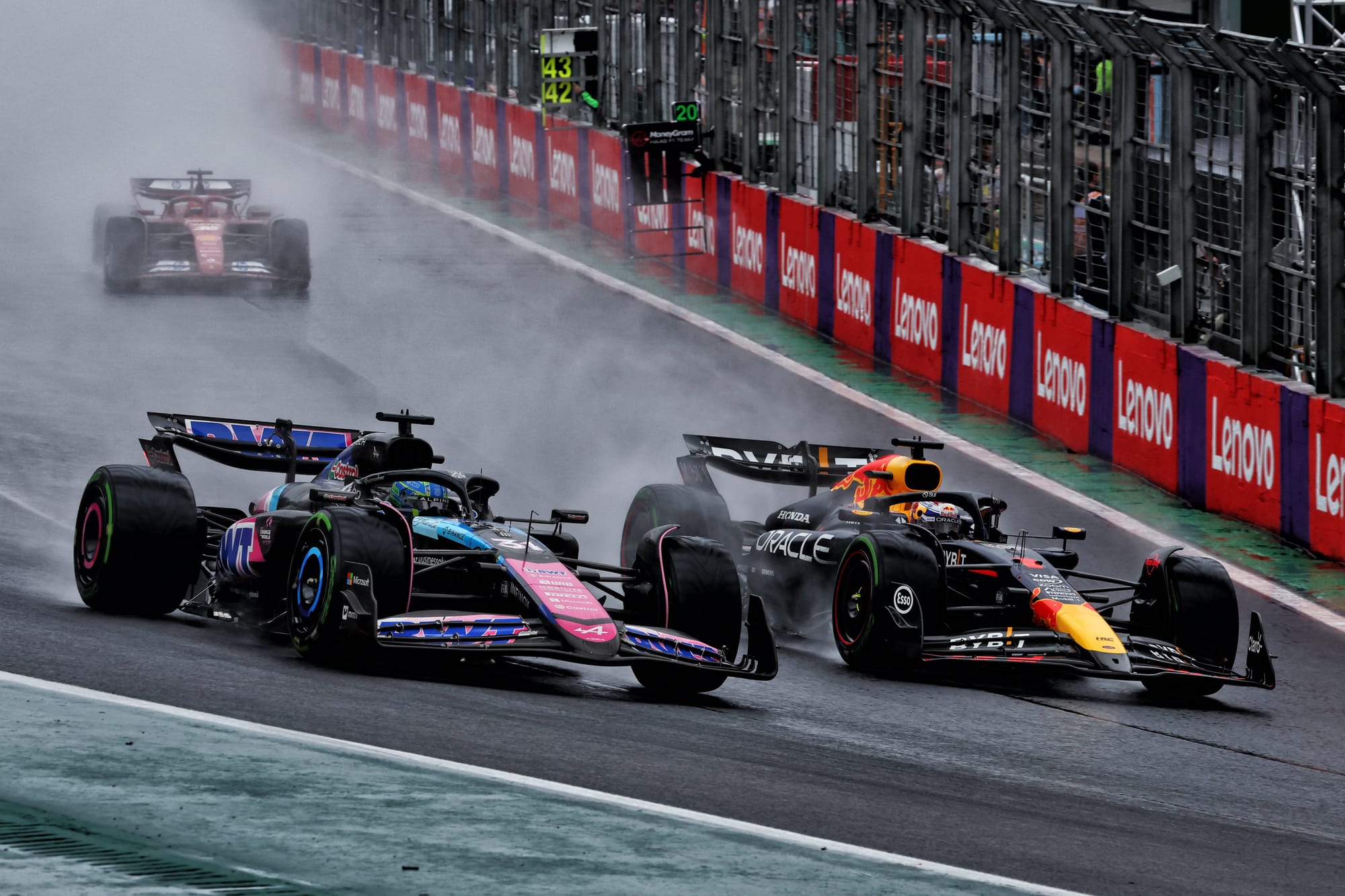
The Red Bull would lock up its fronts just like any other car but Verstappen's way of using the inside line into Turn 1, be late on the brakes and still get the car turned early was gold-dust.
That blink-brief period of overlap between braking and cornering, of distributing the weight between the four tyres, is the core separating the very good from the blessed. Verstappen was using it to maximum effect.
Norris can drive like this too and it's at the heart of his many spectacular qualifying performances this year. But ultimately he's not been as robust as Verstappen over the season.
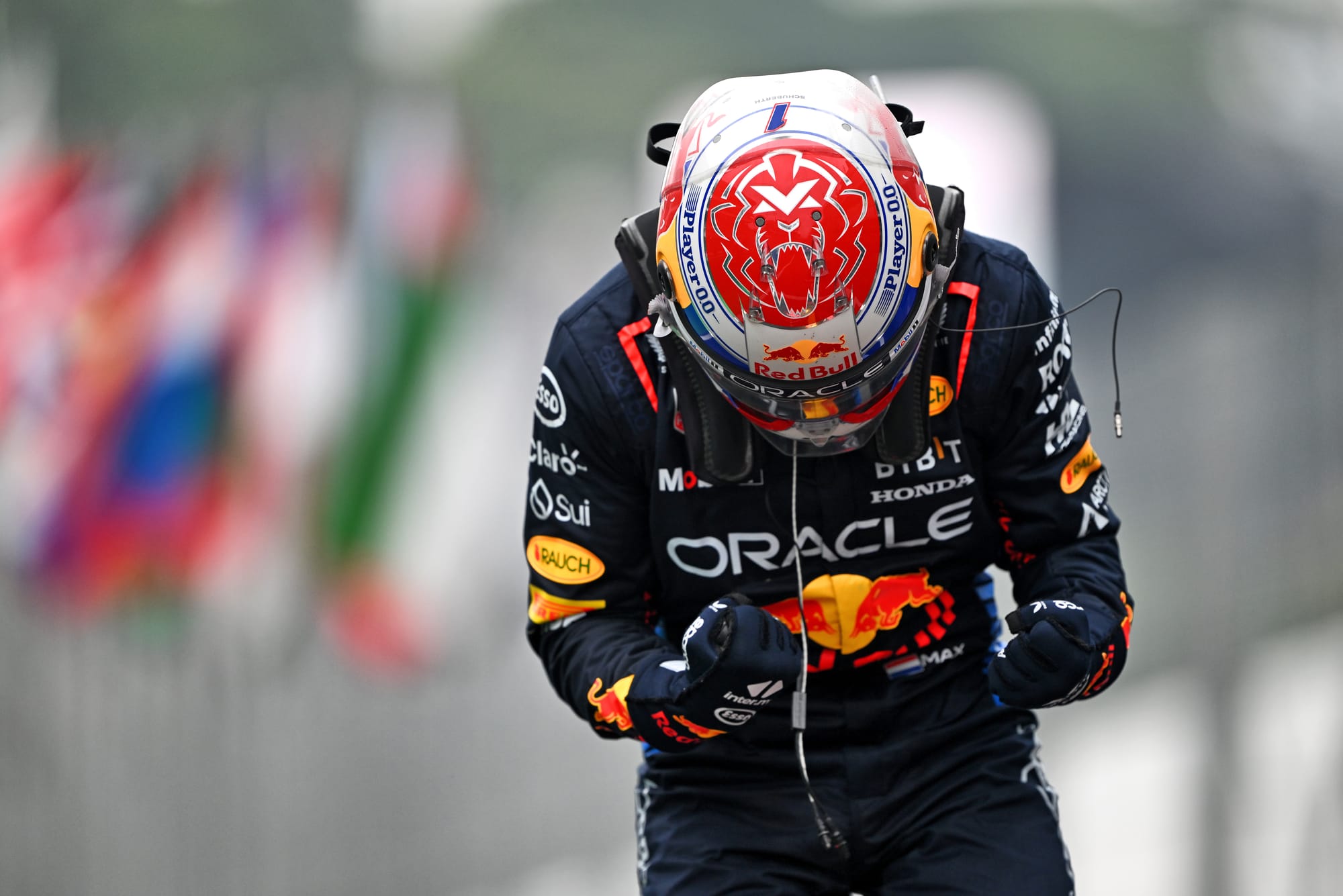
Yes, Verstappen has played less than fair on occasion when they've come wheel-to-wheel, but he doesn't need to. Red Bull has been making steady progress with the RB20 since its Austin upgrade, particularly regarding its tyre usage. All that was required after that was a wet day at Interlagos.
Once Verstappen was leading he pulled away at an average of over 0.7s per lap from Ocon.
But much as we should acknowledge the sheer perfection of his drive, the sequence of fastest laps of the race - he set seven of them in the last 13 laps - was also a consequence of a drying track and falling fuel load. Ocon was doing personal bests at much the same frequency, albeit in a slower car.
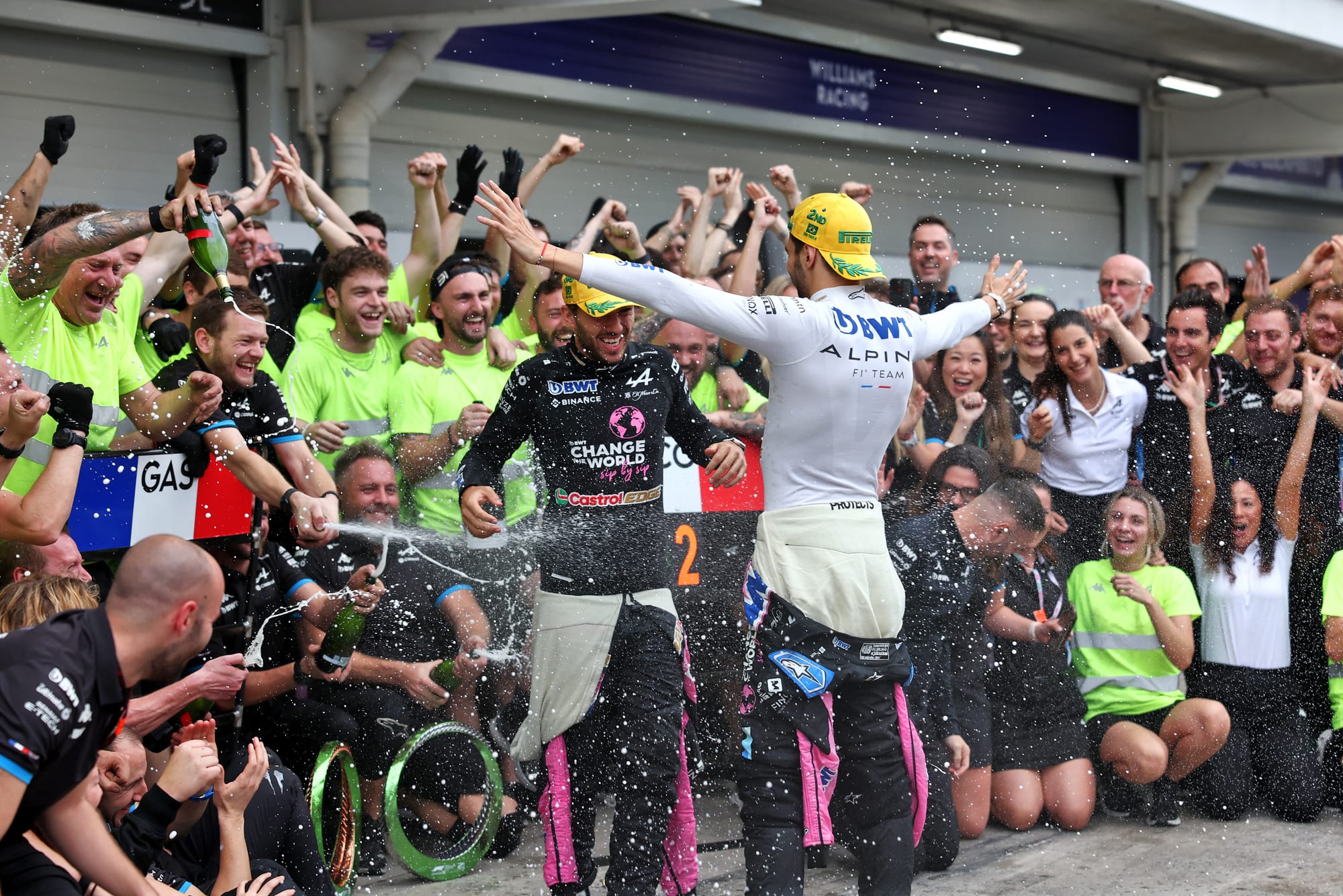
That said, Alpine has made good strides in recent races and its calls here were spot-on. A 2-3 was a great feel-good outcome after such a terrible season.
Gasly was kept busy defending from Russell (who'd quickly retaliated on Leclerc) but the Mercds never did find a way by the Alpine - and they pulled well clear from Leclerc who lamented his set-up choices, ensuring that Norris lost yet-more time behind a slower car than he'd already done.
Piastri's low-key weekend (sprint pole aside) had him seventh across the line but taking a penalty for an early collision with Liam Lawson.
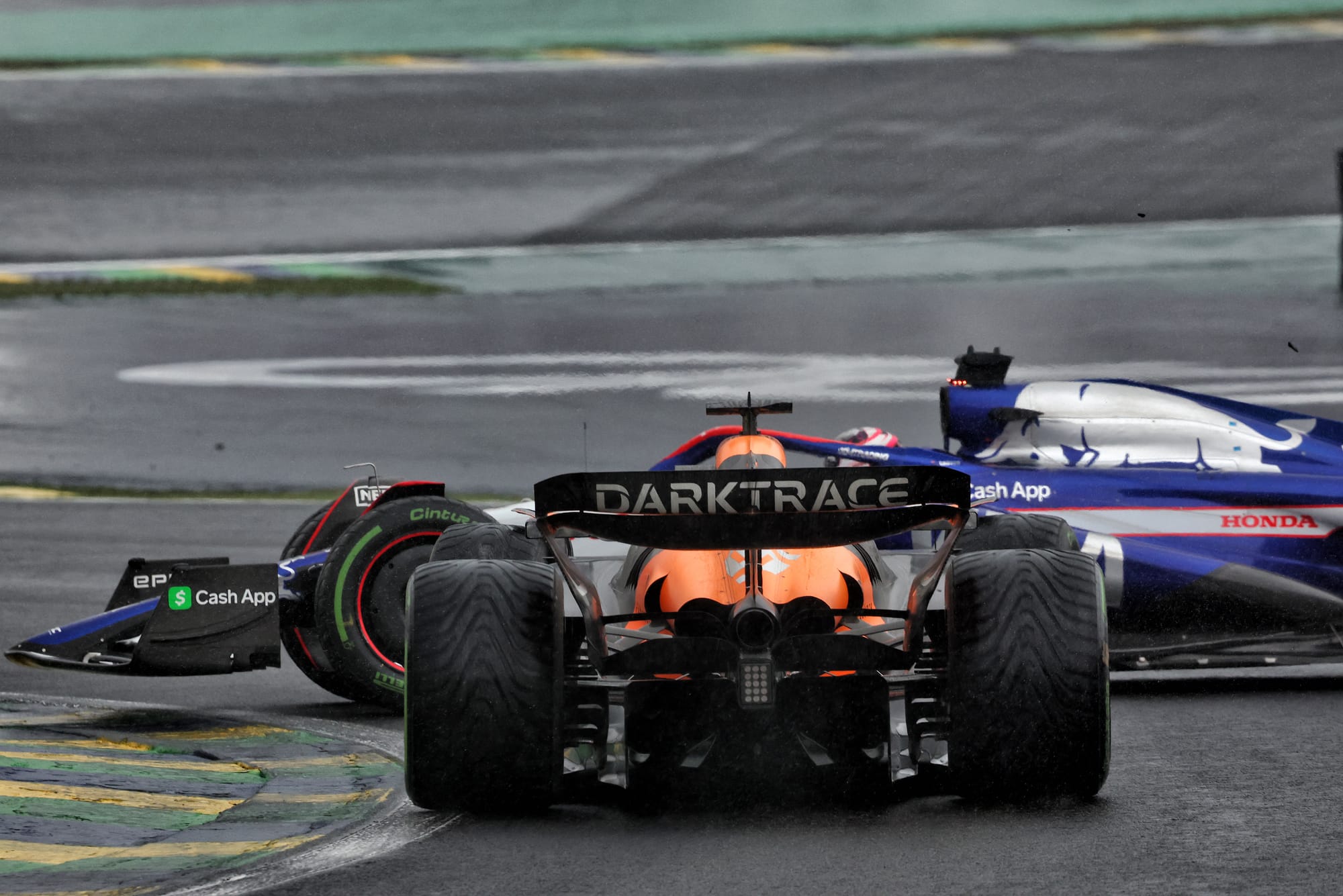
Tsunoda, eighth at the flag, had dropped back from his early third where his starring wet qualifying performance had put him when he opted to stop rather than stay out. Otherwise it might have been him rather than Ocon leading the race for a time and finishing runner-up.
Lawson and the disconsolate Hamilton took the final points.
Verstappen - after mischievously pointing out there were no English in the press conference - pondered: "I was expecting to lose points [to Norris]. Starting 17th, I wasn’t thinking of winning."


